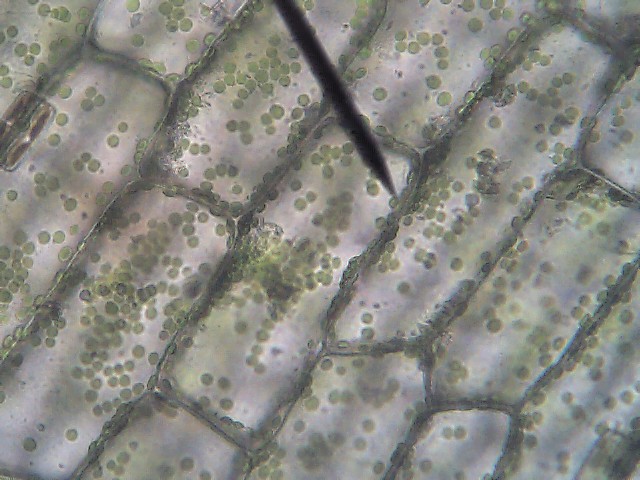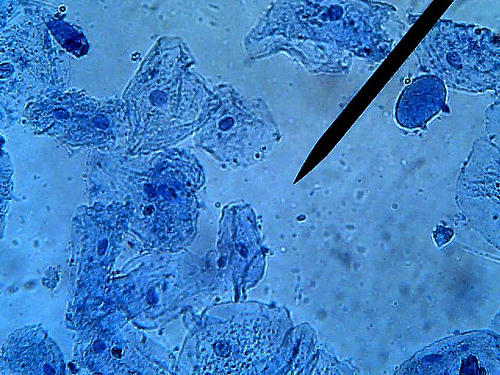Comparing Plant and Animal Cells
Both plant and animal cells are eukaryotic cells, meaning they have a true nucleus that houses DNA. Both cell types have a cell membrane, which controls the movement of substances into and out of the cell. Plant and animal cells both contain cytoplasm, which is the watery internal environment that contains organelles.
Plant and animal cells both have organelles, which carry out important functions of the cell.
Plant Cells
Shown below is an elodea plant. The cells are the rectangular structures and the green circles are chloroplasts. The nucleus is present, but not easy to see on the slide due to the abundance of chloroplasts. Plant cells have a cell wall, shown as the dark border around each individual cell. (Note, the dark line is actually a pointer, part of the microscope.)

Animal Cells
The cells shown below are from the inside of a human mouth. These epidermis cells are gently scraped with a toothpick and stained with a dye called methylene blue.
You can see that the shape of the cells is somewhat round. They do not have cell walls, so they aren't arranged in boxes like the plant cells are. The dark circle in the center of the cell is the nucleus.

Plant and Animal Cell Resources
Introduction to the Microscope – E Lab – explore how to use a light microscope (Letter E Slides)
Cheek Cell Lab – observe cheek cells under the microscope
Observing Plant Cells – microscope observation of onion and elodea
Comparing Plant and Animal Cells – compare onion cells to human cheek cells
Investigation: What are the Different Types of Cells – survey of different kinds of cells, cheek, blood, onion root, leaf